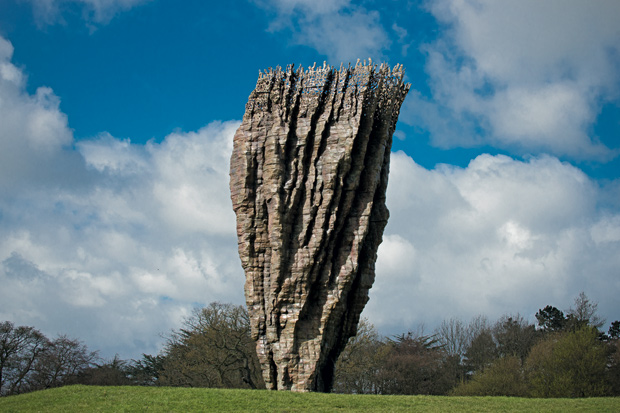The New York-based sculptor Ursula von Rydingsvard comes from a long line of Polish and Ukrainian peasant farmers. She was born in Germany in 1942 on a forced labour farm to which her parents had been transported by the Nazis. Her early memories are of a wooden world — of huts, fences, domestic utensils and tools — on the farm and in postwar refugee camps.
After von Rydingsvard’s family emigrated to America in 1950, wood was to become the primary material of her powerfully evocative sculptures, more than 50 of which are now on show at the Yorkshire Sculpture Park, both in the open and in the indoor Underground Gallery — an ideal setting for this the largest ever exhibition of her works, which includes six major outdoor pieces made especially for the event (until 4 January).
In 1975, while a student at Columbia University, von Rydingsvard began to experiment with industrially milled 4×4-inch cedar beams and developed a highly original labour-intensive method of creating works through a mixture of building and carving. Many of these took on monumental proportions and have the appearance of rock outcrops, cliff faces and caves.
While cedar wood remains her main medium, she also now creates cedar moulds to make works in other materials. More than 20-feet high, her iridescent ‘Bronze Bowl with Lace’ (above), which was cast only just in time to be shipped across the Atlantic for the show, is a spectacular work, described by the artist as ‘the most ambitious of my life’.





Comments